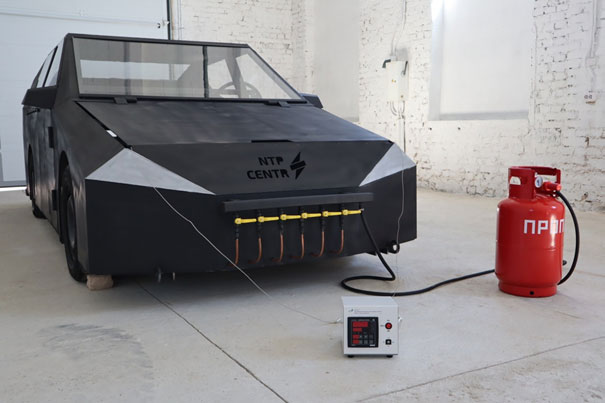News
NTC-15.92 “Electric Vehicle Fire Simulation Model”
The NTC-15.92 training complex, or “Electric Vehicle Fire Simulation Model,” was developed and integrated into the educational process at the Institute for Retraining and Advanced Training of the University of Civil Protection, MES Belarus. This model is designed to train and improve skills in dealing with emergencies involving electric vehicles.
The model is designed to simulate various emergency scenarios, including the transition of electric vehicle power batteries to an fault state. The model allows personnel to practice:
- Locating electric vehicle power batteries using software on tablets or mobile devices.
- Extinguishing or cooling power batteries when they enter an emergency state, or preventing such a transition.
- Rescuing people, monitoring conditions, and managing thermal effects during battery failure.

The training model helps simulate real-life emergency situations safely, offering insight into the dynamics of electric and thermal processes, fire development on electric vehicles, and the control of the gas environment during electric vehicle fires. Additionally, it trains participants in battery location reconnaissance, firefighting methods, and cooling techniques to prevent battery re-ignition after extinguishing.
The simulated negative scenarios allow trainees to experience real-life conditions in a safe and controlled environment, demonstrating the following key aspects:
- The dynamics of thermal and electrical processes occurring when power batteries enter an emergency mode, as well as the overall development of fires in electric vehicles.
- Monitoring the gas environment during fires in electrically powered vehicles.
- The procedure for locating power batteries and identifying the areas of greatest thermal impact.
- Directions for applying extinguishing agents for the most effective cooling (or extinguishing) of power batteries.
- Determining the effectiveness of various extinguishing agents used for cooling (or extinguishing) power batteries.
- Measures for monitoring the condition of the power battery after cooling (or extinguishing) to prevent re-ignition.
- The allocation of resources, including fire and emergency rescue equipment, during emergencies involving electric vehicle power batteries entering an emergency mode.
- Safety rules for handling emergencies involving electric vehicle power batteries in emergency mode or preventing them from entering such a state.
- Protection of victims and bystanders during emergencies involving electric vehicles.
 Русский
Русский
